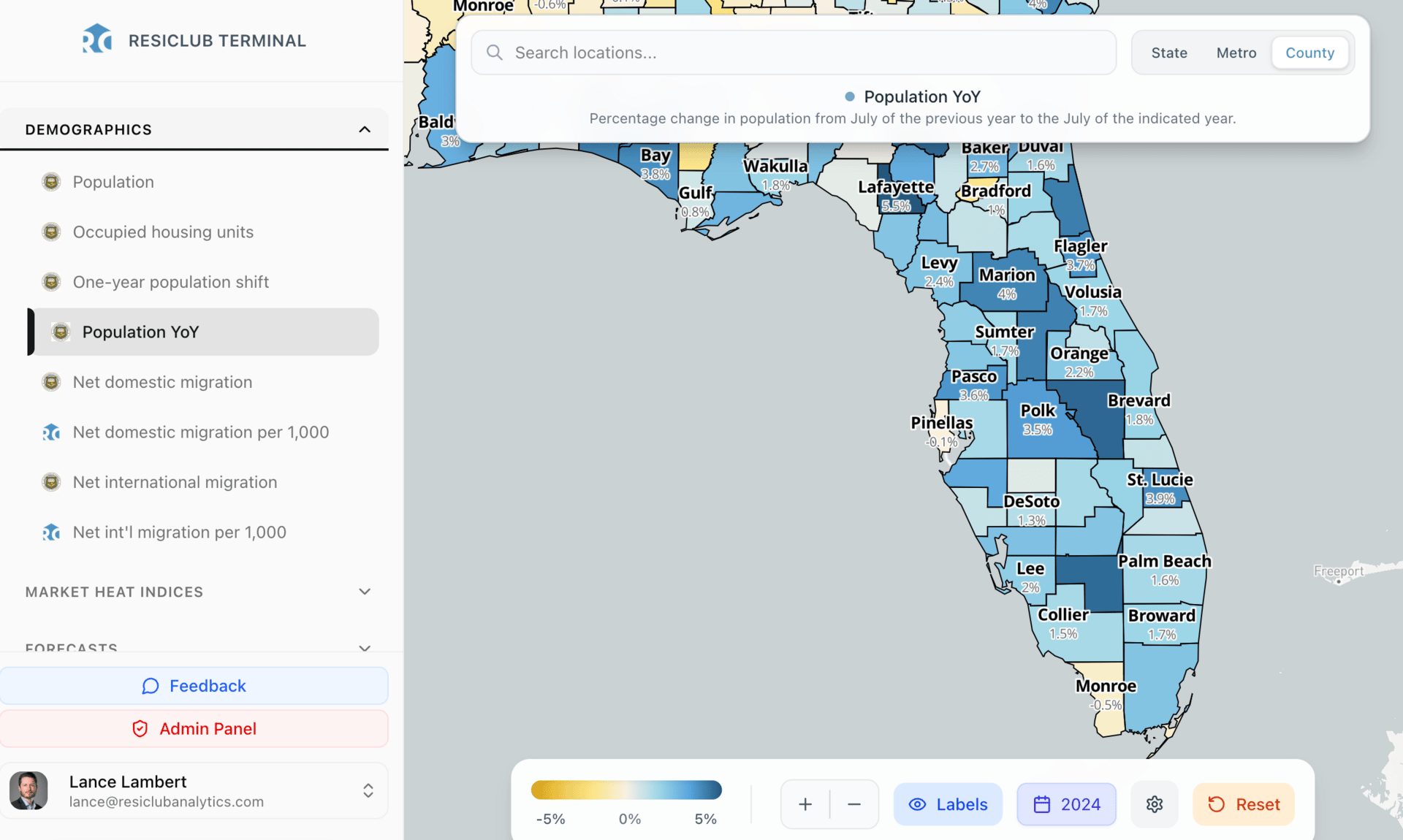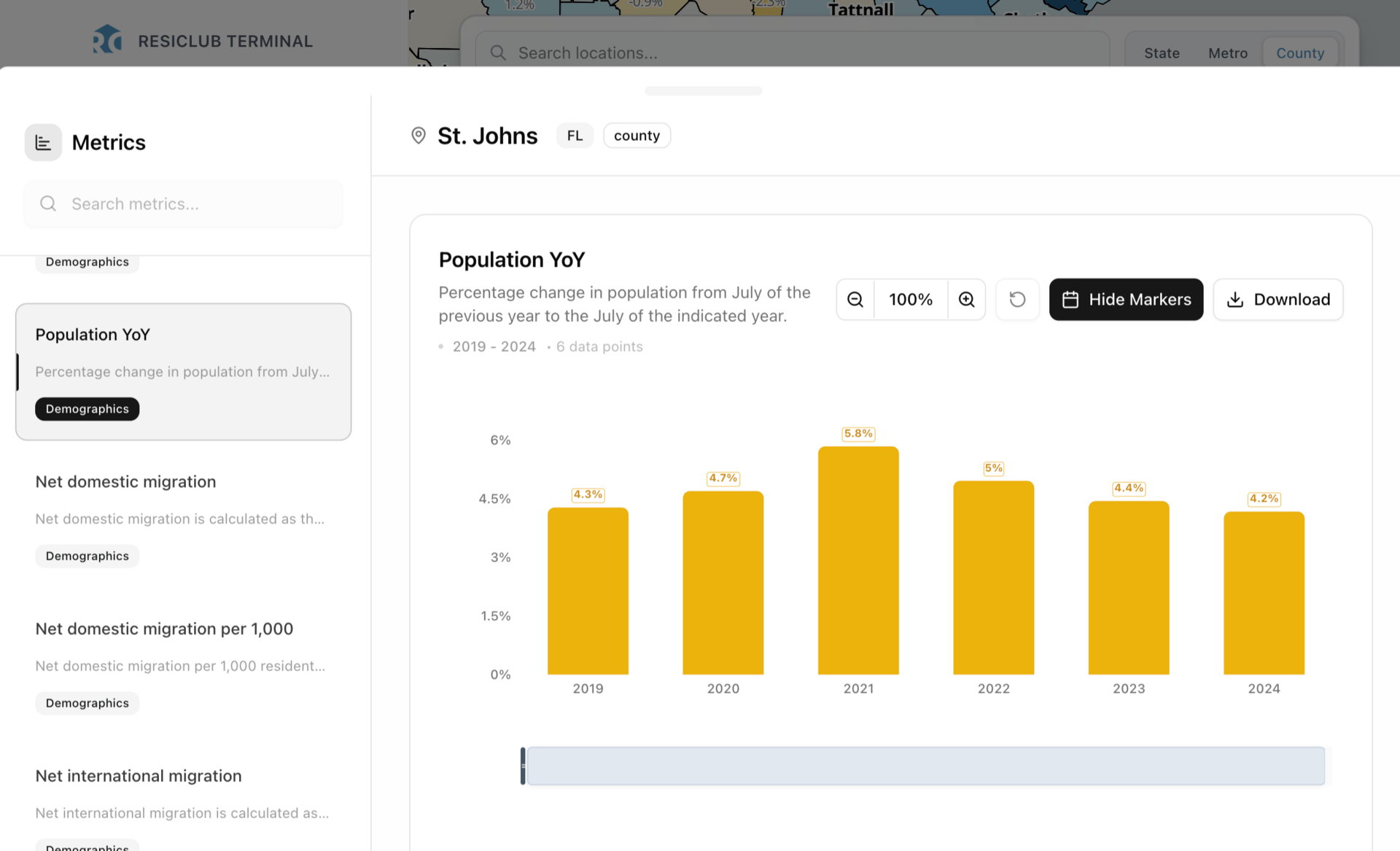- ResiClub
- Posts
- These are America's 50 fastest growing housing markets by population
These are America's 50 fastest growing housing markets by population
Among America’s 1,500 most populated counties, the table below shows the 50 counties that saw the biggest per capita population increase.
Today’s ResiClub letter is brought to you by Stessa!
Landlords—are you still chasing rent checks?
Rent collection shouldn’t be a source of stress. With Stessa Rent Collection, you can finally skip the late-night reminders, paper checks, and awkward conversations.
Here’s how it works:
✅ Tenants pay rent online—no more paper checks or Venmo/Zelle mix-ups
✅ Funds are deposited directly into most U.S. banks (no special account needed)
✅ Automatic reminders and receipts keep everything transparent
✅ No landlord fees—tenants cover processing costs if they choose credit/debit
Whether you manage a single-family rental or a small portfolio, Stessa makes it simple to collect rent on time, every month.
👉 Set up Stessa Rent Collection today and get paid without the hassle.
America’s fastest growing housing markets

Among America's 1,500 most populated counties, the table below shows the 50 counties that experienced the largest per capita population growth over the most recently measured 12-month period by the Census.
Over half (64%, or 32 counties) are located in either Texas or Florida.

Understanding where America’s fastest-growing counties are isn’t just a demographic curiosity—it’s a strategic long-term edge for land investors, developers, and homebuilders. Population growth is a signal of where the housing stock could need long-term expansion. Over time, fast-growing counties often evolve into bigger economic hubs—think Denton County outside Dallas—and incomes/wealth rise long-term in those places, so do house prices.
We should point out that sometimes growth markets—which might have the best long-term outlooks—also carry a higher probability of passing through a short-term correction. See, these regions are more likely to experience sharp domestic migration booms followed by sudden deceleration. When migration surges coincide with easy-to-build conditions and a large influx of development or investor capital, the upswing can accelerate quickly. Builders scale up production, land values soar, and prices can detach from local income fundamentals. But when demand cools—whether due to higher mortgage rates, diminished affordability, or slowing in-migration—these same markets can correct faster than supply-constrained markets. It’s a pattern that’s been visible since the end of the Pandemic Housing Boom, as parts of the Sun Belt—including Austin and Southwest Florida—saw local price pullbacks after a period of intense construction and investor activity. Over time, however, these areas often stabilize and resume growth, supported by their underlying economic momentum and continued appeal to households seeking relative affordability, lifestyle, or job opportunities.
Within the ResiClub Terminal, ResiClub PRO members can explore population changes, net domestic migration, and international migration at a local level.
Bonus chart.
This week, housing economist Brad Hunter published some of Yardi Matrix’s latest forecast for single-family build-to-rent deliveries. We’re amid a period where build-to-rent deliveries are declining as the post-pandemic pipeline—supercharged by the easy-money period following the pandemic—winds down.
Hunter has long believed that projects securing capital now and coming online in 2026 and 2027 will be well-positioned, facing less BTR competition.
“They [BTR starts] are down by more than 50% since the peak in the second quarter of 2024. As a consequence we see a crash coming in the number of [BTR] units slated to be completed. These completions are estimated by Yardi Matrix, and they're showing a steep drop between this year and next year, and a continued decline in deliveries in 2027. Going back to our main thesis we've been talking about for some time now, 2026 will be a great vintage for BTR and 2027 will be even better.”



